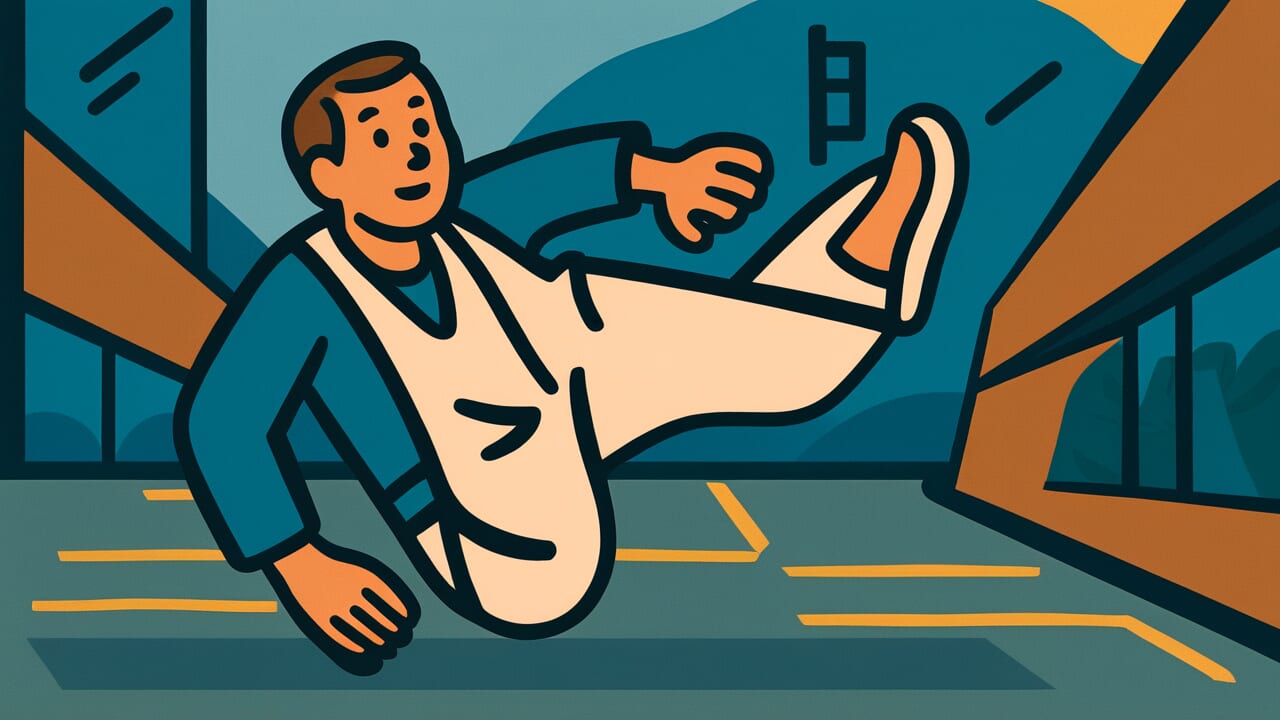How to Read “Doing with your feet what should be done with your hands”
Te de suru koto wo ashi de suru
Meaning of “Doing with your feet what should be done with your hands”
This proverb criticizes inefficient actions that ignore proper methods. It describes doing things in a clumsy, misguided way when better approaches exist.
The saying targets people who work ineffectively or ignore basic principles. It applies to those who skip proper research, rush through tasks that need care, or handle things superficially without understanding the core issues.
People use this expression when someone takes the wrong approach to a task. For example, it fits situations where someone cuts corners on careful investigation or tries quick fixes for work that requires time and attention.
Modern life emphasizes speed and efficiency. This sometimes leads us to skip necessary steps. But this proverb reminds us that choosing the right method matters more than rushing.
The wisdom connects to another saying about taking the long way being faster. Both teach that proper methods lead to better results.
Origin and Etymology
No clear historical record shows when this proverb first appeared. However, its structure reveals a straightforward and intuitive origin.
Consider how the human body works. Hands evolved for delicate tasks. Fingertips have sensitive nerves and can perform complex movements. Feet, on the other hand, specialize in movement and support. They’re not built for detailed work.
This division of labor developed when humans began walking upright. Our bodies naturally assigned different roles to hands and feet over millions of years.
The proverb uses this physical reality as a metaphor. Trying to do hand work with your feet naturally fails. The results are poor and the process is inefficient.
This clear bodily comparison became a way to criticize any action that goes against natural order or common sense.
Japanese culture has always valued handwork. Craftsmen’s skills, calligraphy, and tea ceremony all celebrate precise hand movements. In this cultural context, the proverb carried special weight.
The saying resonated deeply in a society that respected careful, skilled manual work.
Usage Examples
- He’s jumping into advanced problems without learning the basics. That’s like doing with your feet what should be done with your hands.
- Trying to operate the machine without reading the manual is doing with your feet what should be done with your hands. It’s bound to fail.
Universal Wisdom
This proverb endures because it addresses a universal human tendency. We all want to take shortcuts and avoid hard work.
Humans naturally seek easier paths. We dislike time-consuming methods and complicated procedures. We constantly look for simpler ways to do things.
This desire isn’t necessarily bad. The drive for efficiency has powered human progress throughout history.
But here lies the trap. True efficiency differs from apparent convenience. Doing with your feet what should be done with your hands might seem easier at first glance.
In reality, it takes more time and produces worse results. Our ancestors understood this human weakness well.
The proverb teaches a fundamental truth. Every task has an appropriate method. This applies beyond tool use to all areas of life.
Study, work, and relationships all require respecting proper procedures. This wisdom remains constant across time.
We ignore proper methods when we rush or seek comfort. This human weakness appears clearly through the body metaphor.
The simple physical comparison makes the message powerful and memorable. That’s why it still speaks to us today.
When AI Hears This
The human brain contains a map called the Penfield homunculus. It shows how much brain surface area controls each body part.
Surprisingly, the area controlling hands and fingers is about ten times larger than the area for feet. Our brains dedicate enormous neural circuits to hand movement.
Why such a difference? Hands contain about 27,000 sensory receptors. Fingertips alone have roughly 2,500 nerve endings. Foot soles have only about 7,000 receptors total.
Hands can grasp, pinch, and rotate objects in hundreds of different ways. Feet specialize mainly in supporting body weight and walking. Their role is much more limited.
The inefficiency this proverb describes is biologically inevitable. When you try working with feet, your brain can’t access the vast neural resources normally assigned to hands.
Instead, it must force complex tasks through minimal neural circuits.
Imagine asking ten people to do work that needs a hundred-person team. That’s what happens when feet attempt hand work.
Evolution spent hundreds of millions of years making hands into precision tools. This result became fixed in our brain’s physical structure.
The principle of using the right tool isn’t just a lesson. It’s a biological truth carved into our nervous system.
Lessons for Today
This proverb teaches modern people the value of staying true to fundamentals.
Modern society demands speed and efficiency in everything. We’re tempted to skip proper procedures and bypass necessary processes.
But this saying warns that easy shortcuts often become the long way around.
Consider learning new skills. Jumping to advanced techniques without mastering basics leads to shallow understanding. At work, skipping careful preparation causes major problems later.
In relationships, superficial responses where trust-building is needed prevent real connections.
The key is recognizing what truly requires “hand work.” You don’t need perfection in everything. But for essential matters and fundamentals, have courage to use proper methods.
The correct approach might seem like a detour. Yet it’s actually the most reliable and ultimately most efficient path.
Think about your own life. What deserves your careful attention? What should you handle properly rather than rushing through?
The answer to these questions might change how you approach your daily challenges.



Comments